Have you ever noticed the whimsical tufts of hair adorning some cats’ ears? These delicate wisps are not just a beautiful accessory but also a fascinating evolutionary feature with a purpose as enchanting as their appearance. Ear tufts are the crown jewels of certain cat breeds!
Did you know that cat ear tufts play a vital role in amplifying sound? They help cats fine-tune their already remarkable hearing!
This unique feature evolved as a survival adaptation, especially in breeds that hail from wild, rugged landscapes with heightened sensory abilities.
So, let’s look at the most popular cat breeds with ear tufts!
12 Ear Tufts Cat Breeds
Here is a list of the most unique and outstanding ear tuft cat breeds:
1. Maine Coon
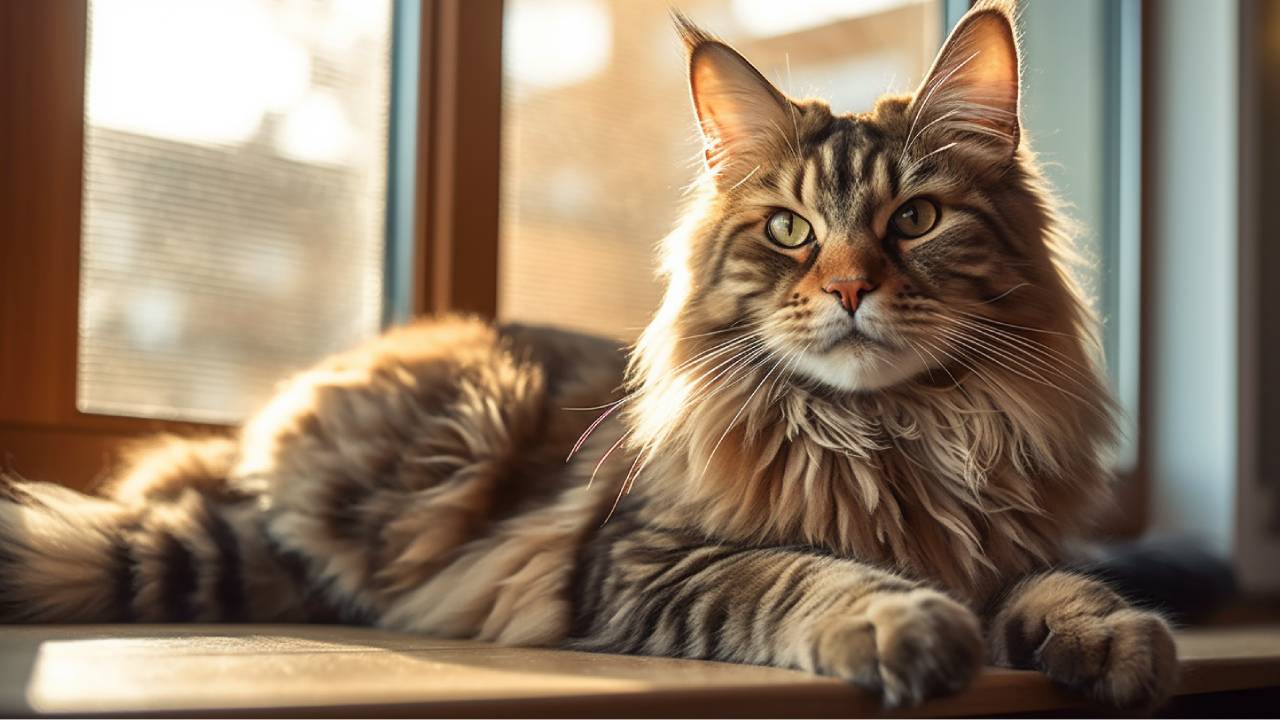
Meet the Maine Coon, affectionately known as America’s cat. This breed represents rugged beauty with its impressive size, lush mane, and bushy tail. But don’t let their formidable appearance fool you; Maine Coons are known for their gentle and playful nature, making them beloved companions in homes worldwide.
Interesting Facts:
- Weatherproof Fur: The Maine Coon’s thick, water-resistant fur is perfectly adapted to the cold, wet climate of its New England origins. This luxurious coat includes a ruff around the neck, reminiscent of a lion’s mane, protecting against snow and rain.
- A History of Mystery: There are several legends about the origins of the Maine Coon, including one that involves Marie Antoinette attempting to escape France with her beloved cats. While she didn’t make it to America, her cats supposedly did and are said to have bred with local felines to create the Maine Coon breed.
2. Turkish Van

Turkish Van, a breed of cat with long ear hair, is as unique as it is enchanting. Known for its love of water, the Turkish Van is often called the “swimming cat.” This robust and energetic breed has a striking appearance with its large, muscular frame and semi-long white coat often marked with color on the head and tail. But it’s their affinity for water that really sets them apart—these cats don’t just tolerate water; they revel in it, making splashes both literally and figuratively.
Interesting Facts:
- Historical Navigator: Originating in the Lake Van region of Turkey, this breed has been known to swim in the lake’s harsh, salty waters, a rare trait among felines.
- Color-Changing Coat: The Turkish Van is one of the few cat breeds where kittens are born pure white, and their distinctive color markings develop as they mature.
- Their love for water is complemented by a unique seasonal shedding pattern, where they lose their heavy winter coat to become more streamlined for swimming in the warmer months.
- The term “Van pattern” is coined from this breed, referring to cats that have color only on their heads and tails.
- Cultural Icon: In Turkey, the Turkish Van is not just a pet but a national treasure, often featured in traditional art and folklore.
3. Lynx Point Siamese
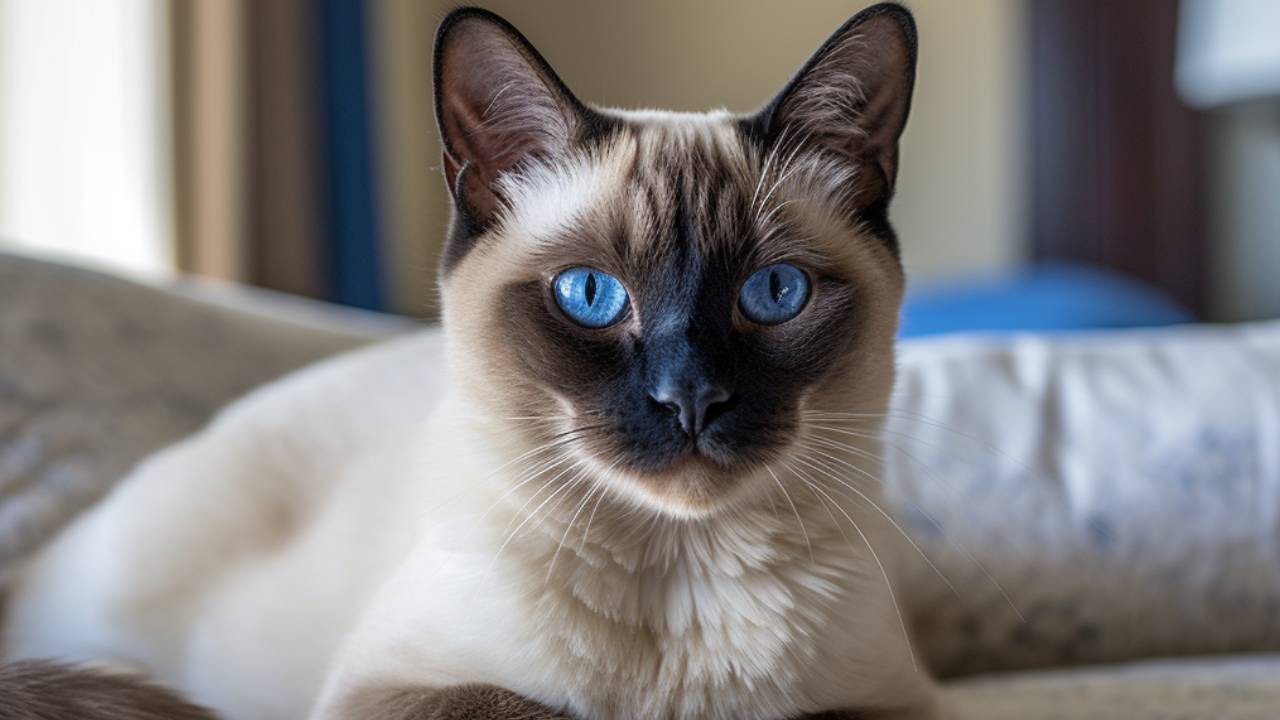
Lynx Point Siamese cat breed enchants with its striking blend of classic Siamese elegance and the wild markings of a lynx. This breed is a visual symphony of intricate patterns and mesmerizing blue eyes that draw admirers in.
Interesting Fact: The Lynx Point Siamese originated from the accidental mating of a purebred Siamese and a tabby, which introduced the distinctive striped and spotted markings. This blend enhanced their beauty and brought a robust health profile typical of hybrid vigor.
4. Siberian
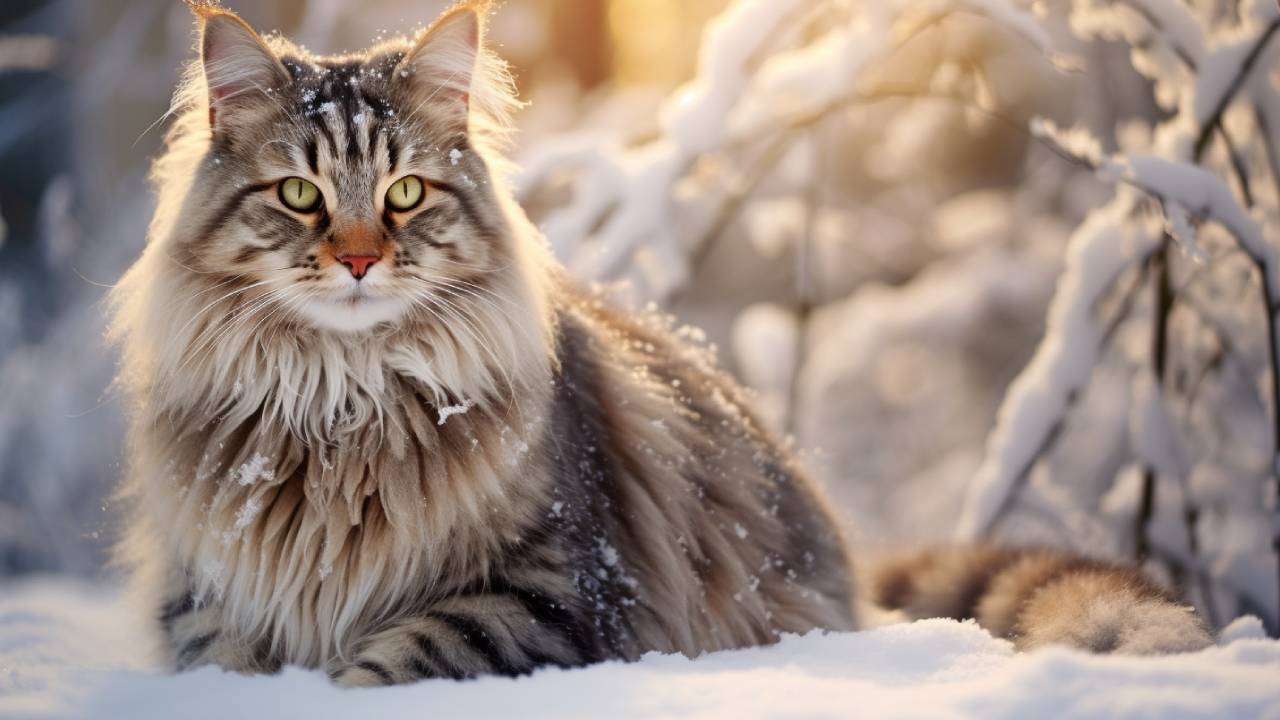
Siberian cat breed, known for its luxurious fur and hearty nature, also features ear tufts that lend an extra layer of intrigue. Originating in the cold climates of Russia, these tufts likely provide added protection against the elements, showcasing the breed’s adaptability to its natural habitat.
Interesting Facts:
- Natural Swimmer: Believe it or not, Siberians actually enjoy water, which is quite rare for cats. Their thick coats protect them from the cold, making them fearless when it comes to splashing around.
- Seasonal Changes: Watch a Siberian’s coat change with the seasons. In winter, they sport a lush, full coat that sheds in the summer to a lighter version, keeping them comfortable year-round.
- Health Champions: Siberians are known for their robust health. They’re one of the breeds least likely to develop common feline genetic diseases, making them a sturdy companion for years of adventures.
5. American Bobtail
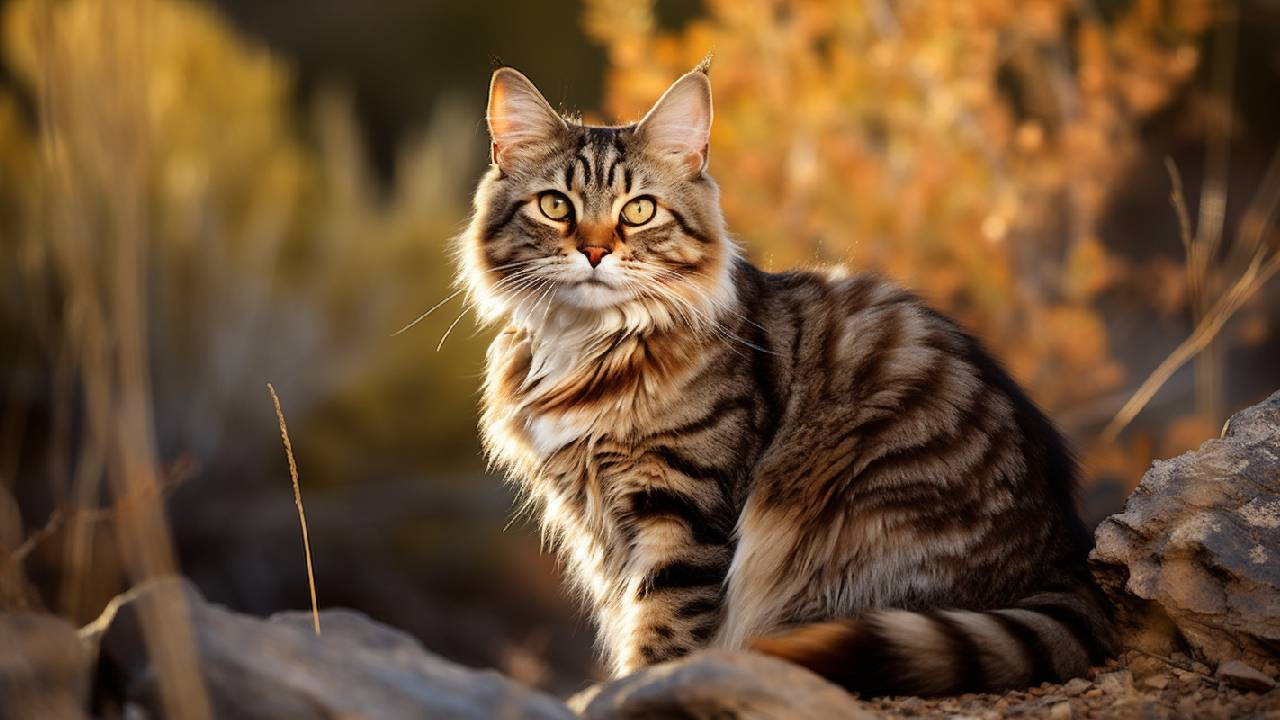
American Bobtail, the cat with a personality as unique as its tail! If you’re looking for a feline friend who’s always up for a game and brings a bit of the wild into your living room, this breed has got you covered. With a bobtail that makes each look uniquely different, these cats are as individual as their owners.
Interesting Facts:
- Each American Bobtail has a distinct tail, ranging from one to four inches, and no two tails are the same. This quirky feature comes from a genetic mutation, adding to their rugged charm.
- Known for their intelligence and problem-solving skills, American Bobtails are often compared to Houdini. They can figure out how to open doors and escape from closed rooms, so you might want to invest in puzzle toys to keep them entertained!
6. Norwegian Forest Cat
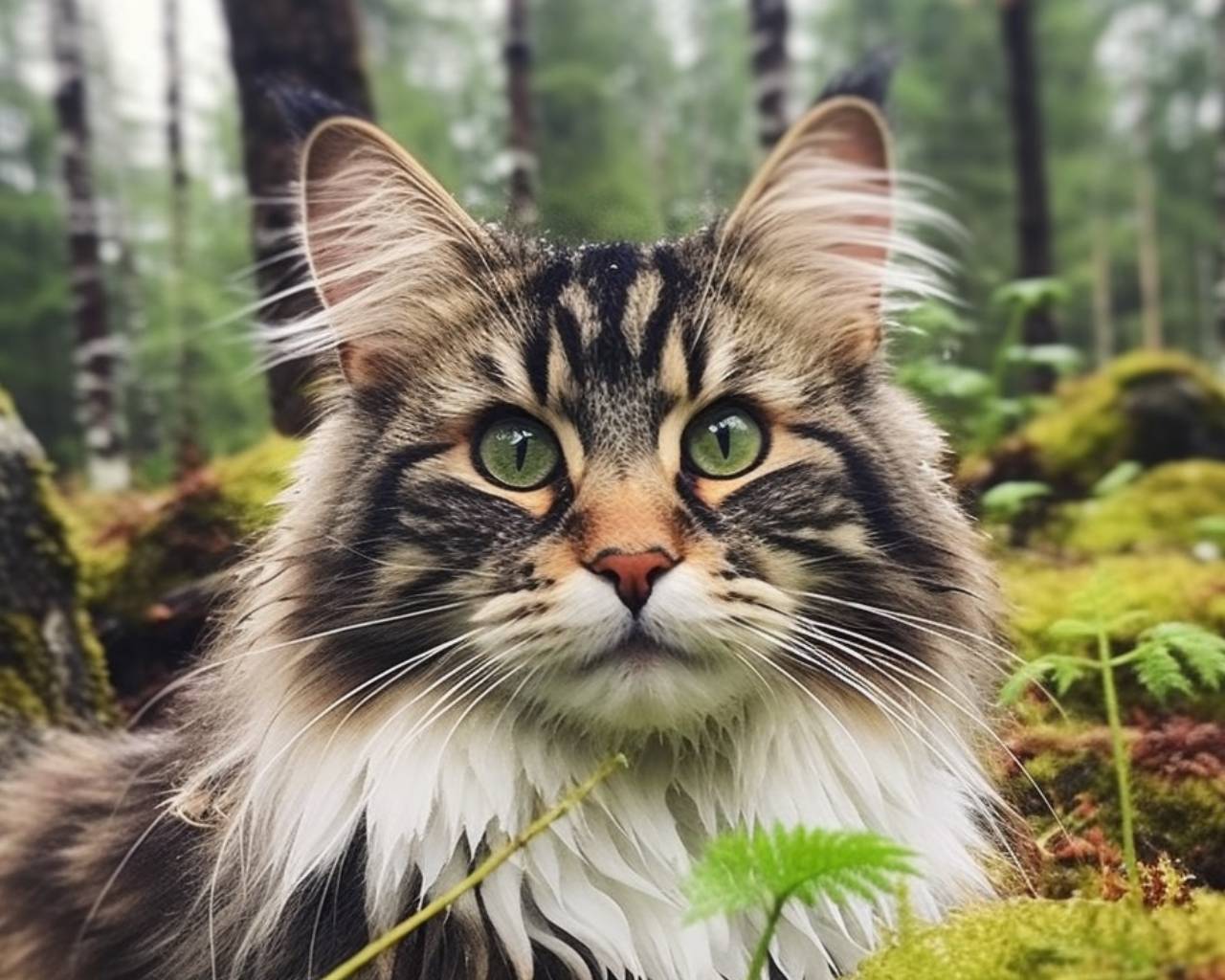
Ever imagine having a tiny Viking in your home? Meet the Norwegian Forest Cat, a breed that looks like it stepped straight out of a Norse myth.
- Built for the Cold: With their thick, water-resistant fur and bushy tails, which they can wrap around themselves for extra warmth, Norwegian Forest Cats are the epitome of winter-ready pets. Their double coat keeps them snug and warm, even in the chilliest weather.
- Natural Hunters: Despite their fairy-tale charm, Norwegian Forest Cats are formidable hunters. Originally bred to keep barns and homes rodent-free, they still carry that keen hunting instinct. Don’t be surprised if they bring you a “gift” after a patrol around the yard.
7. Caracat
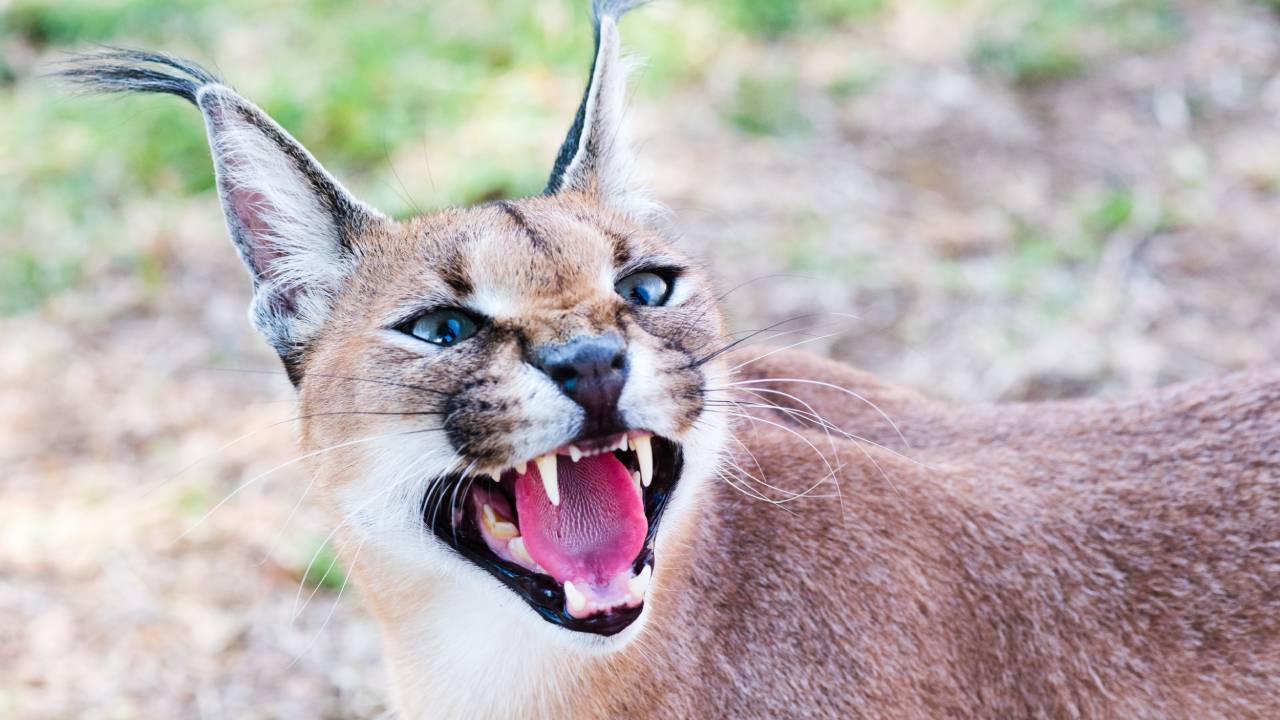
Imagine a creature with the grace of a housecat and the wild heart of a jungle cat. That’s the Caracat for you, a stunning hybrid that captures the best of both worlds. These cats boast the intriguing ear tufts and striking eyes of their Caracal ancestors, making every glance feel like a walk on the wild side.
Interesting Facts:
- Hybrid Origins: The Caracat is a relatively new breed, born from the adventurous cross between a domestic cat and the wild African Caracal. This blend gives them their unique looks and an enchanting, mysterious demeanor.
- Distinctive Features: With larger-than-average ears topped with impressive tufts and usually a robust and athletic body, Caracats has a distinctly exotic appearance that’s hard to miss.
8. Pixiebob

With its bobbed tail, tufted ears, and spotted coat, the Pixiebob looks like it’s just wandered out of a fairy tale. Don’t be fooled by its wild appearance; this breed is as domestic and friendly as they come.
One of the most endearing features of the Pixiebob is its short tail, typically about 2 to 4 inches long. According to legend, this is a result of its mythical bobcat lineage. Whether true or not, this feature adds to its enchanting persona.
9. Highland Lynx

Highland Lynx is a breed that combines distinct physical traits with a bold personality. Known for its curled ears and polydactyl paws, this cat is all about functionality wrapped in eye-catching style. Highland Lynxes are not just about looks; they’re agile and intelligent, making them fantastic problem solvers and playful companions. Their strong, muscular build allows them to excel in climbing and exploring, ideal for active households looking for a cat with character and energy.
- Remarkable Highland Lynxes:
- “Atlas,” celebrated for his large ear tufts and strong features, won best-in-breed in several regional cat shows.
- “Sierra,” a Highland Lynx, gained attention for her exceptional ear tufts and striking appearance, featured in feline wildlife documentaries.
- Admired for Distinctiveness: Valued in domestic and exhibition settings for their unique characteristics and link to the wild.
- Symbol of Wild Beauty: Their ear tufts perfectly mix domestic grace and wild allure.
10. Desert Lynx

Desert Lynxes are a breed that boasts the resilience and ruggedness of a wild cat with the affectionate nature of a domestic pet. Known for their large ears and striking bobtail, Desert Lynxes are not just about tough looks; they’re incredibly adaptable and thrive in various environments.
They’re social and loving and possess a playful streak that makes them engaging family members. With their robust build and alert demeanor, Desert Lynxes are perfect for those who appreciate a cat that’s both a companion and a conversation starter.
11. LaPerm

LaPerm is a cat that truly stands out with its unique curly coat, which feels as whimsical as it looks. This breed isn’t just about turning heads; its curls come with a super affectionate personality that loves nothing more than to curl up in your lap.
Originating from a spontaneous genetic mutation, LaPerms are known for their hypoallergenic qualities, making them a great choice for those with mild cat allergies. Active and playful, they bond deeply with their families and are always up for a gentle cuddle or a playful romp.
12. Serengeti

The Serengeti cat breed is created from a blend of Bengal and Oriental Shorthair lineage. This cat boasts a sleek, muscular build and bold spotted coat that echoes its wild ancestors.
The Serengeti is not just about good looks; it’s incredibly agile and curious, always ready to pounce or play. They thrive on interaction and love being the center of attention, making them perfect for active households that can match their dynamism and zest for life.
Ready to discover the joy a furry friend can bring into your life? There are so many amazing reasons to get a cat. Cats aren’t just pets; they’re family members who bring endless fun, comfort, and companionship. Whether you love the playful pounce of an energetic kitten or the serene purr of a relaxed adult, a perfect cat is waiting just for you.
Check out our kittens for sale and find your new best friend today. Your next furry companion could be just a click away!

FAQs
What purpose do ear tufts serve in cats?
Ear tufts enhance a cat’s hearing by directing sounds more efficiently into their ears. This feature helps them detect subtle noises, aiding their natural predatory behaviors and environmental awareness.
Can ear tufts be considered an indicator of a breed’s wild origins?
Yes, ear tufts are often linked to a breed’s wild ancestry. Breeds with ear tufts tend to exhibit a mix of domestication and untamed traits, highlighting their unique blend of elegance and wild charm.
Do ear tufts require special grooming?
They don’t usually require special grooming, but regular checks should be part of your routine to ensure the ears are healthy. It is crucial to keep them free of dirt and parasites, especially for cats with denser fur around the ears.
Are ear tufts genetically inherited?
Yes, ear tufts are a genetic trait typically inherited from a cat’s parents. Depending on their genetic makeup, the presence and prominence of ear tufts can vary even among siblings.
Are ear tufts more prevalent in certain geographical regions?
Ear tufts are found across various cat breeds worldwide, but they might be more common in breeds originating from colder climates. These tufts could have evolved to provide additional protection against extreme weather conditions.



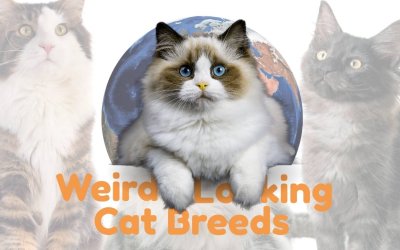

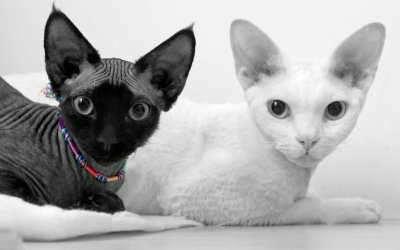
Cats with ear tufts are the cutest! My Maine Coon has these lovely ear tufts, and everyone always comments on them. I enjoyed learning more about which breeds have them.